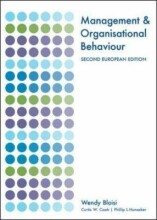Quality year - Food safety
42 important questions on Quality year - Food safety
What is the definition of food security according to The World Bank?
- All people having access
- Physical and economic access
- Sufficient, safe, and nutritious food
- Meeting dietary needs and preferences
- Supporting an active and healthy life
What does food hygiene aim to control?
- Necessary measures
- Conditions
- Fitness of foods
What does GMP stand for in food safety?
- Guidelines
- Procedures
- Principles
- Safety
- Quality
- Higher grades + faster learning
- Never study anything twice
- 100% sure, 100% understanding
What is the aim of control measures in food safety?
- Actions
- Activities
- Food safety hazard
- Acceptable levels
How do chemical hazards occur and what are some examples?
- Occurrence: Any part of the chain - harvesting, storage, processing, preparation, service
- Examples: Water, food contact materials, cleaning agents, pest control substances, contaminants, pesticides, biocides, food additives
What are allergens and their risk in the classification of hazards?
- Allergens are substances causing immunological reactions.
- Risk arises from accidental contamination.
- Examples include 14 EU allergens.
What does the radiological risk in FSMA refer to?
- Radiological is a hazard classification under FSMA.
- Refers to risks from radiological contamination.
What economic burden do foodborne diseases impose in low- and middle-income countries according to the 2019 World Bank report?
- Total productivity loss: US$ 95.2 billion annually
- Cost of treating foodborne illnesses: US$ 15 billion each year
What is involved in analysis concerning risks?
What does communication entail in risk management?
What is the scope of risk analysis, risk assessment, and risk management in the context of HACCP?
- Risk Analysis: Structured approach.
- Risk Assessment: Scientific evaluation of risks.
- Risk Management: Decision-making and control strategies (control, eliminate, mitigate, minimize).
What are the objectives of risk analysis, risk assessment, and risk management?
- Risk Analysis: Identify and understand risks.
- Risk Assessment: Quantify and qualify risks, science-based.
- Risk Management: Minimize and control risks.
What keywords are associated with risk analysis, assessment, and management?
- Risk Analysis: Identification, integration, impact.
- Risk Assessment: Likelihood, severity, hazard analysis.
- Risk Management: Mitigation, compliance, CCPs.
How is HACCP applied in risk analysis, assessment, and management?
- Risk Analysis: Structure of the overall food safety plan.
- Risk Assessment: Hazard Analysis (Principle 1).
- Risk Management: CCPs, limits, monitoring, corrective actions.
What distinguishes proactive from reactive risk management?
- Predicting risks and their potential effects
- Considering past, present, and future activities to prevent risks
- Quick reactions to minimize adverse effects
- Analyzing past events for coordinated responses
What are the key steps in risk management according to PMI?
- Identify risks: Recognize potential risks.
- Qualify risks: Assess and prioritize risks.
- Quantify risks: Measure potential impact.
- Plan risk responses: Develop strategies to mitigate risks.
- Monitor and control risks: Track and adjust plans.
What are key components in controlling food risks according to the slide on risk management in foods?
- GAP: Good Agricultural Practices
- Commitment of management: Ensuring leadership support
- Develop and Implement Food safety plan: Strategic planning
- Hygiene: Maintaining cleanliness
- Educate staff: Training programs
- Pest control: Prevention measures
- Proper cooking/holding temperatures: Temperature controls
What is a Critical Control Point (CCP)?
- Control can be applied
- Reduces hazards to acceptable levels
- Importance in food safety
What is an HACCP plan?
- Guidelines for food safety
- Written and systematic approach
Who is part of the HACCP team?
- Implementing safety measures
- Collaborative effort
What does validation mean in HACCP?
- Ensures effectiveness
- Important for food safety assurance
What is an incident in food safety?
- Did not result in harm this time
- Requires monitoring to prevent
What is the second principle of HACCP?
- Aim: Identify points where hazards can be controlled.
- Focus: Ensure food safety.
What is the third principle of HACCP?
- Aim: Set maximum or minimum values for safety.
- Examples: Temperature, pH levels.
What is the fourth principle of HACCP?
- Aim: Ensure compliance with critical limits.
- Monitoring methods: Regular checks, observations.
What is the fifth principle of HACCP?
- Aim: Address deviations from critical limits.
- Actions: Fix the issue, prevent recurrence.
What is the sixth principle of HACCP?
- Aim: Confirm that the system is working effectively.
- Methods: Audits, reviews, tests.
What is the seventh principle of HACCP?
- Aim: Maintain records of monitoring and actions.
- Importance: Legal compliance, accountability.
What is a preliminary activity in hazard assessment?
- Expertise
- Information
- Product
- Processing
- Hazards
- Controls
What is the first step for a food business to implement a successful plan?
- Good Agricultural Practices (GAP)
- Good Practices Manufacturing (GMP)
- Pre-Requisite Programs (PRP)
What are some examples of Pre-Requisite Programs (PRP) measures?
- Pest control
- Personal training
- Allergen management
- Operational controls
- Supplier management
Where can you find more detailed information on food hygiene principles?
- General Principles of Food Hygiene
- Official guidelines for food businesses
What are the key components of conducting a hazard analysis in HACCP?
- Identify all major hazards during the process
- Understand the context of the product
- Be specific and detailed
- If PRP controls hazards, no further action is needed
What is the significance of determining Critical Control Points (CCPs) in food safety?
- Preventing or eliminating hazards
- Reducing hazards to an acceptable level
- Ensuring product safety
- Requires careful development and documentation
What is a critical limit in food safety practices?
- Maximum and/or minimum values
- Control parameters at a CCP
- Preventing, eliminating, or reducing hazards
- Distinguishing safe and unsafe conditions
- Proven through scientific advice or studies
What is the purpose of establishing a system to monitor procedures in food safety?
- Assess whether a Critical Control Point (CCP) is under control
- Produce an accurate record for future verification
- Enable timely corrective action to prevent unsafe products
What are the main purposes of establishing corrective actions in HACCP?
- Prevent hazardous foods from reaching consumers
- Be specific for each CCP
- Be integrated within the HACCP framework
What elements should be included in corrective actions according to HACCP?
- Determination of the cause of non-compliance
- Disposition of non-compliant product
- Recording of taken corrective actions
What minimum specifications should a HACCP plan include regarding deviations?
- Actions taken when deviating occurs
- Responsibility for implementing corrective actions
- Maintenance of records of actions taken
What are the verification procedures established by the FDA for HACCP plans?
- Utilizing expert advice and scientific studies
- Conducting in-plant observations, measurements, and evaluations
- Involvement of a HACCP team or independent expert for documentation
- Unbiased verification by an independent authority possessing expertise
What are the key components of record-keeping and documentation procedures according to Principle 7?
- Maintaining records that verify control implementation.
- Supporting evidence for PRPs.
- Monitoring critical control points.
- Records of audits verifying system operation according to the plan.
What are the key elements contributing to the establishment of a Food Safety Culture?
- Commitment of People in the organization
- Leadership & Engagement of individuals on food safety practices
- Awareness of Hygiene by all food business participants
- Open Communication among involved parties
- Sufficient Resources for food hygiene systems
The question on the page originate from the summary of the following study material:
- A unique study and practice tool
- Never study anything twice again
- Get the grades you hope for
- 100% sure, 100% understanding






























